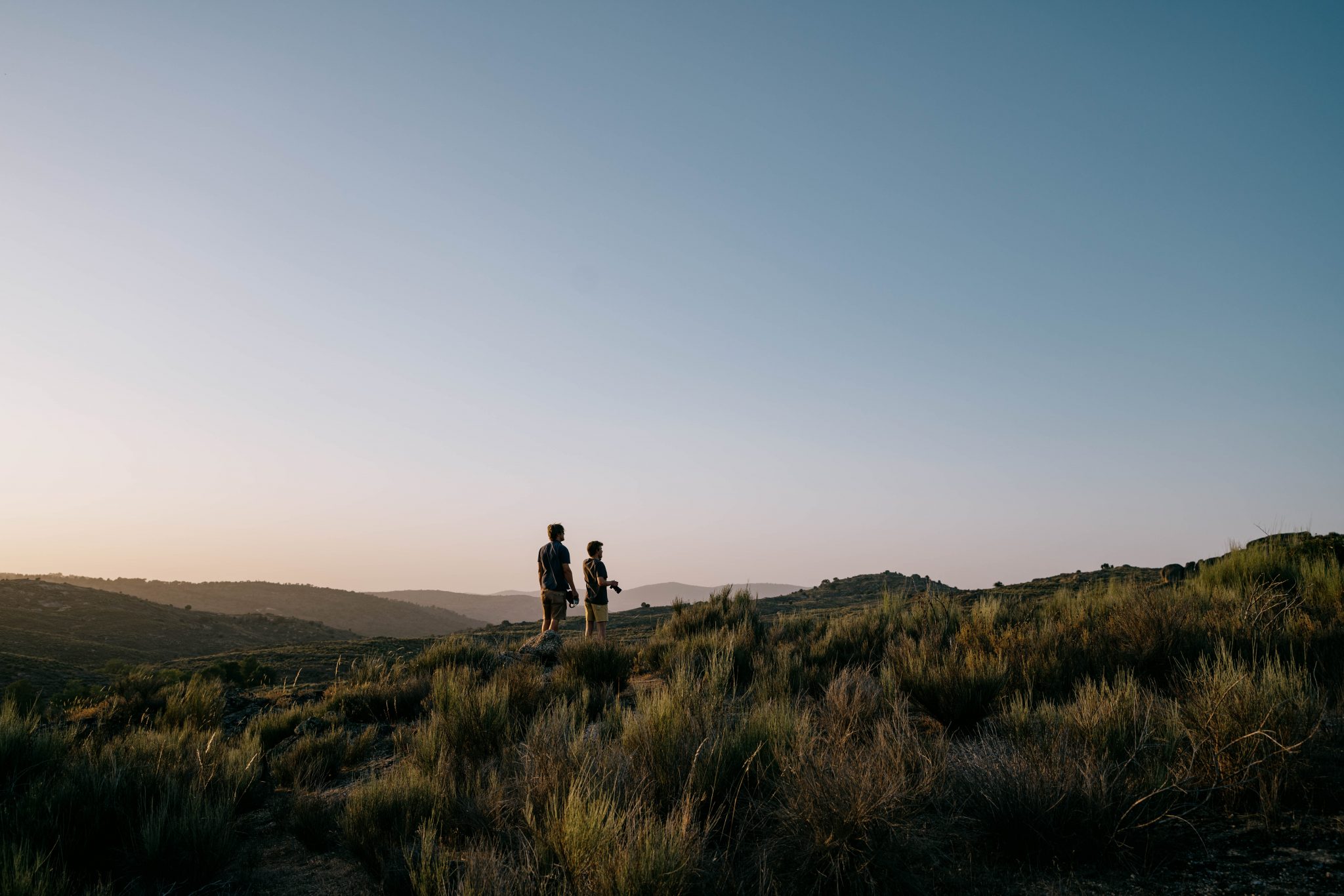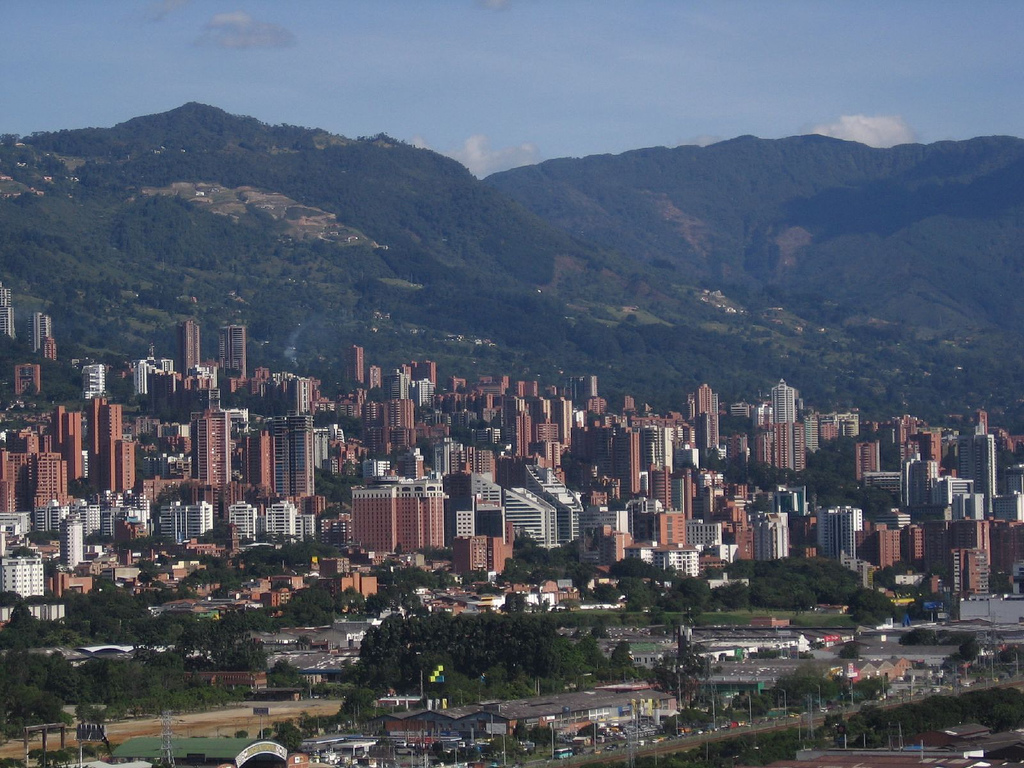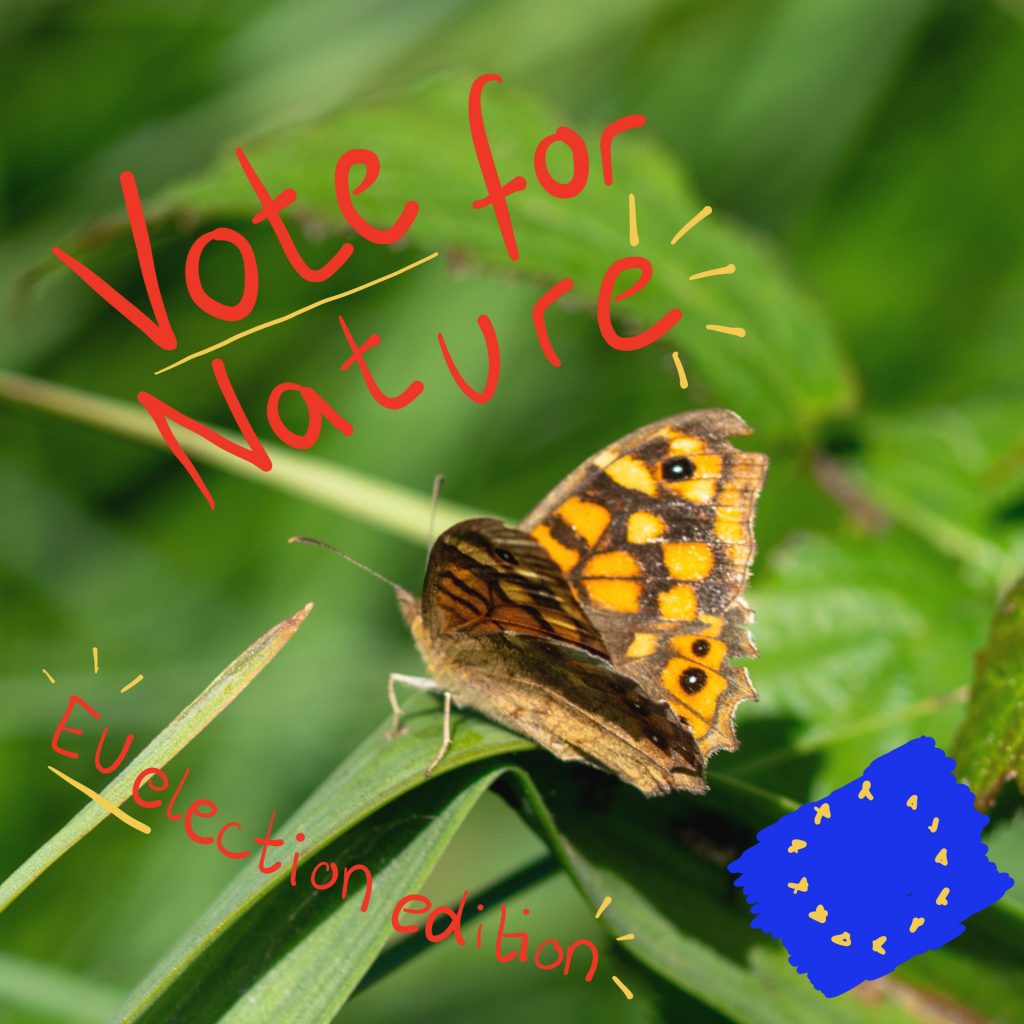We stand atop a hill, gazing down into a vast, open valley. The sun is on the verge of disappearing behind the opposing hill, casting everything in a mesmerising blend of yellows and reds. The view gives us the uncanny sensation of standing not on Earth, but on the moon. Sparse trees dot the landscape struggling against the harsh conditions. Occasionally, patches of crops in poor state break the rocky terrain. Much of the area is dominated by rocks and low scrub, particularly the resilient broom bush, known for thriving after fires – of which there have been many. Without sufficient resources to counteract these blazes, they spread swiftly, presenting a deadly challenge for both humans and wildlife. Especially in August, with temperatures soaring to 40 degrees Celsius, the likelihood of wildfires in this region is ever present and adds on to the gloomy atmosphere.
This degraded state of the ecosystem largely stems from years of human mismanagement. Unsustainable land use practices, compounded by the escalating impacts of climate change, have brought many natural environments to the brink of collapse. Nevertheless, nature possesses a resilient spirit. With heightened awareness and concerted efforts to combat its destruction, we’ve witnessed remarkable instances of nature recovery, surpassing what we once thought impossible.
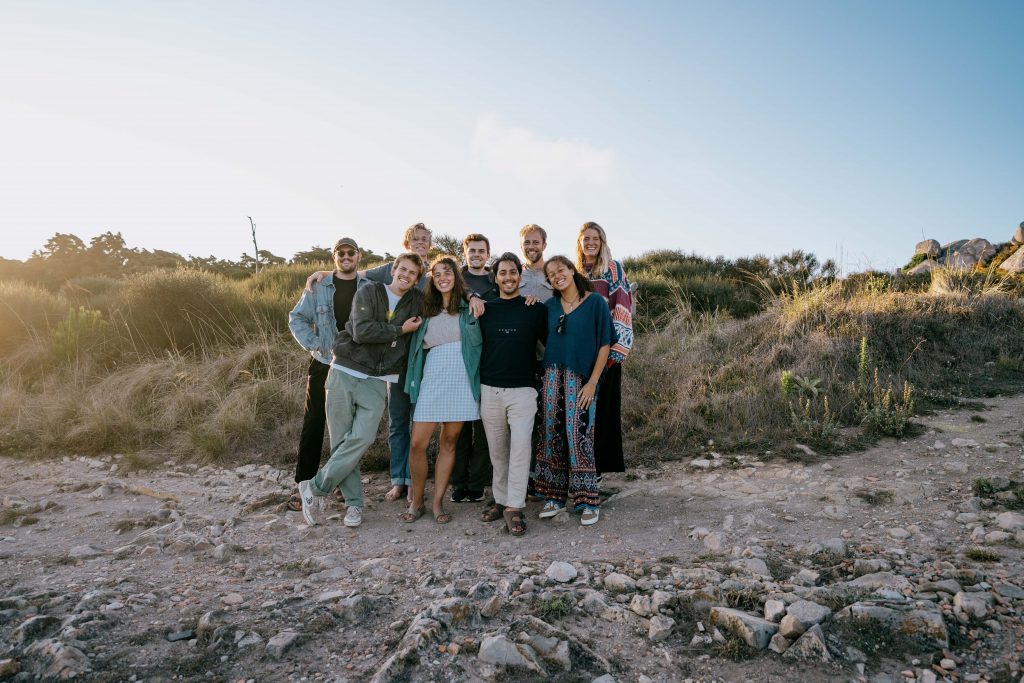
Inspired by these glimpses of nature’s resurgence, we, a bunch of young people in the middle of the largely destroyed nature of Portugal that we call home, find ourselves pondering a compelling question: What if we were to purchase this land and restore its ecosystem, fostering the return of wilderness spaces? This resurgence of wilderness could serve as a pivotal strategy in mitigating the impacts of climate change, ultimately aiding humanity in navigating this crisis with minimal harm. And we know we are not alone in this vision. Young people all over the globe witness the mismanagement of land, with the fear in mind that they will be the ones hit the hardest by the effects of climate change, wondering how they can themselves shape their future in a way that climate change becomes manageable.
Yet, acquiring land isn’t a simple endeavour. Land is a precious and costly resource, often beyond the means of young people seeking to engage in restoration and rewilding efforts. Consequently, many find themselves in a disheartening position, striving to persuade politicians and older generations to enact change, only to encounter indifference. While it may be tempting to succumb to hopelessness and resign ourselves to our perceived lack of agency, such defeatism contradicts our spirit. Moreover, the technological advancements of our era offer potential avenues for effecting change, not as solitary individuals but as a collective force.
Thus, instead of acting alone, we envision a collaborative approach. We’ve delved into the principles of rewilding, collective land ownership, and blockchain technologies, culminating in a transformative plan: Sylvester Rewilding. The idea is straightforward: individuals interested in contributing, pool their resources to purchase land, which is then collectively restored and rewilded. Putting this vision into practice is more complex: How can we ensure that funds are allocated solely to rewilding efforts? And how do we foster equal participation in decision-making processes related to rewilding?
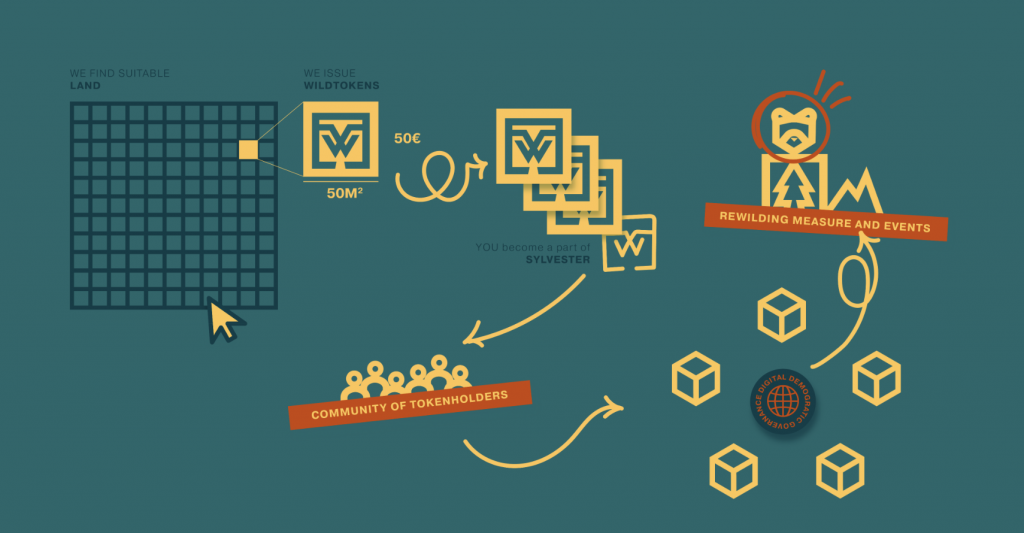
This is where innovative technologies like blockchain and Web3 come into play. We’ve devised a system where land is represented digitally as “WildTokens,” essentially drone images of the land plot in question. The sale of the WildToken finances the acquisition and rewilding interventions on the land. The tokens are integrated into a blockchain, facilitating the transparent sharing of ecological data and making rewilding processes visible. Additionally, WildTokens serve as membership credentials for Sylvester’s digital community infrastructure, providing a platform for discussions, strategizing, and organising rewilding actions.
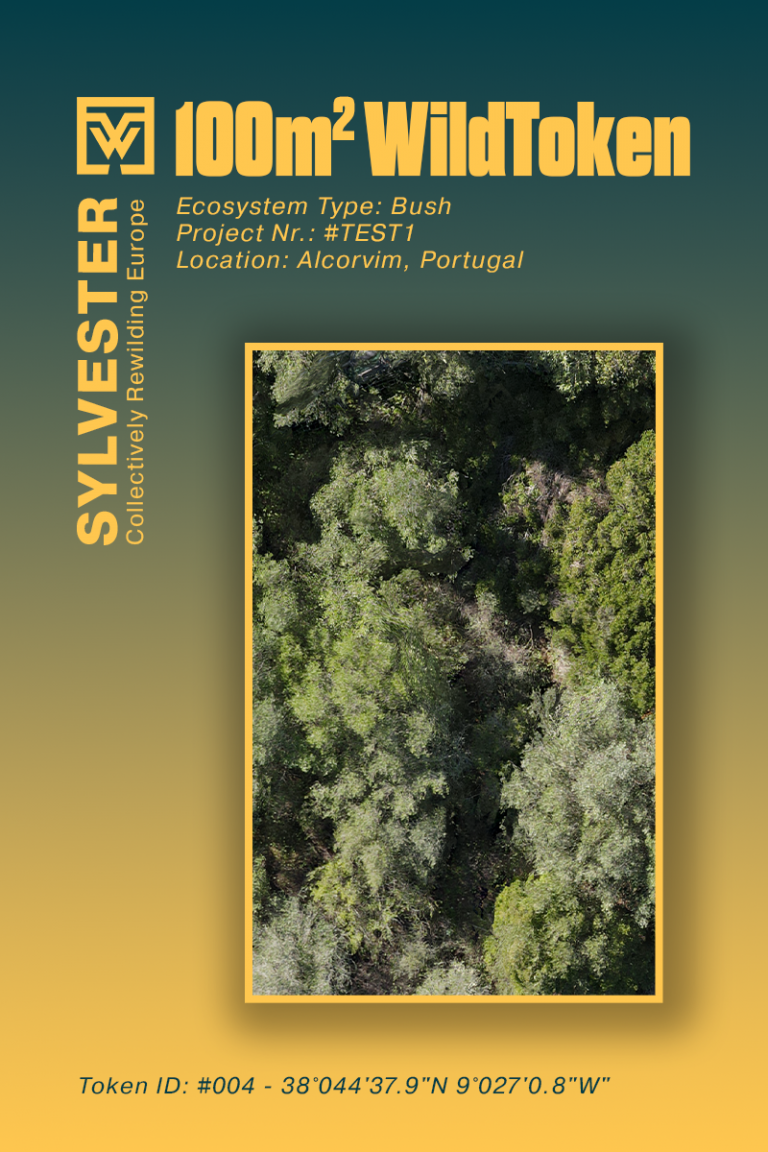
Participation in Sylvester’s digital community isn’t merely about financial contribution; it’s about active engagement and influence. Holders of WildTokens can propose ideas and engage in democratic decision-making processes, ensuring that diverse voices are heard and considered. By fostering open dialogue and idea exchange, we aim to enhance the efficacy and impact of our nature restoration processes.
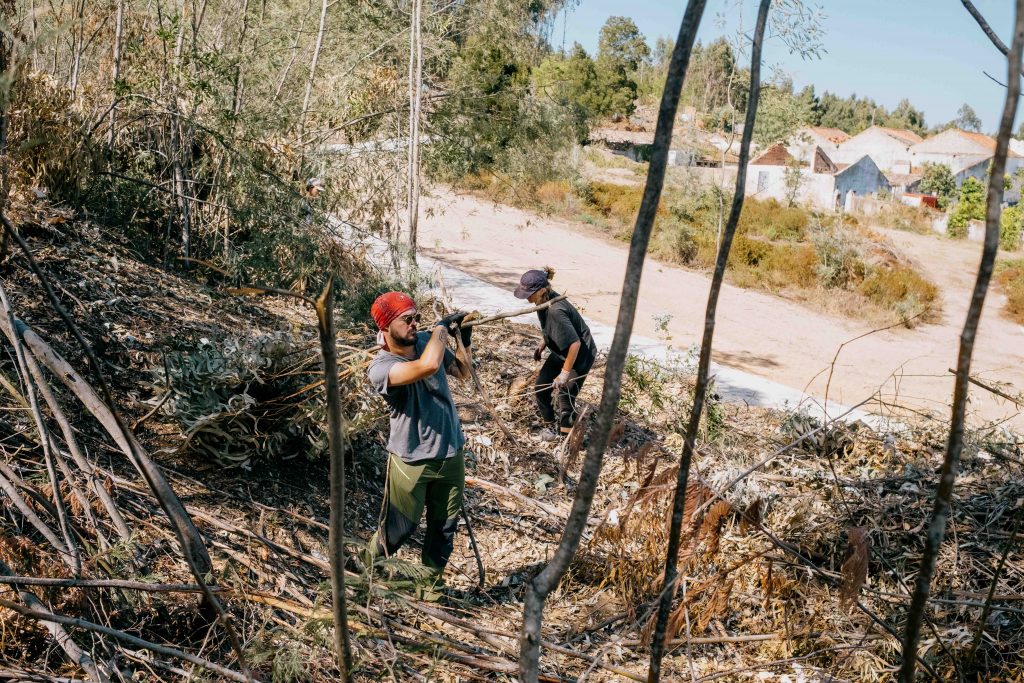
Moreover, possessing a WildToken grants individuals the opportunity to participate directly in on-site rewilding interventions, witnessing the transformation firsthand. Recognizing the integral role of local communities in rewilding efforts, our approach empowers these communities to shape the process and determine how the land should be shared. Making sure both humans and nature maximally benefit from the rewilding process.
At Sylvester, our WildToken approach aims to democratise rewilding, making it accessible to a wide range of people, particularly the youth. It’s not just about financing; it’s about active involvement and shaping the future of nature.
